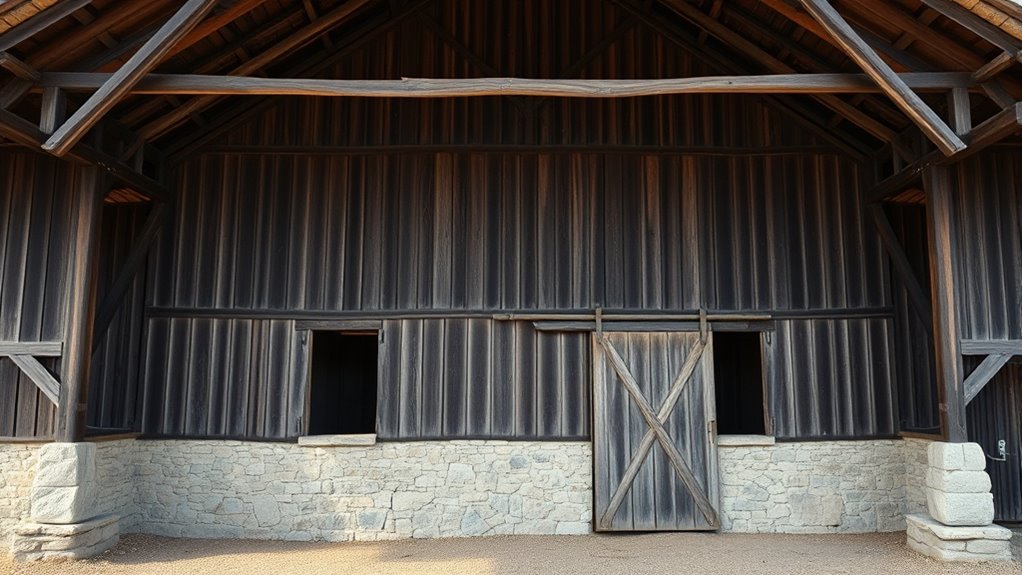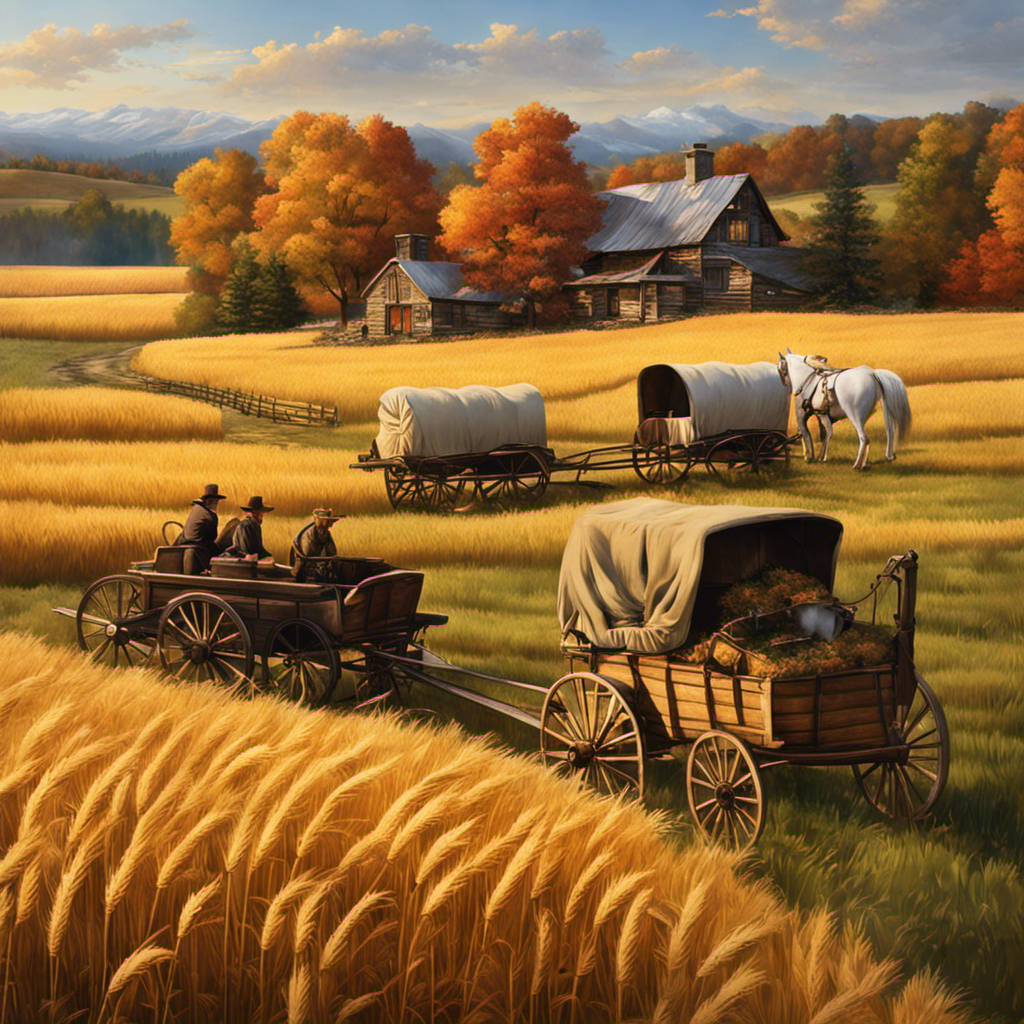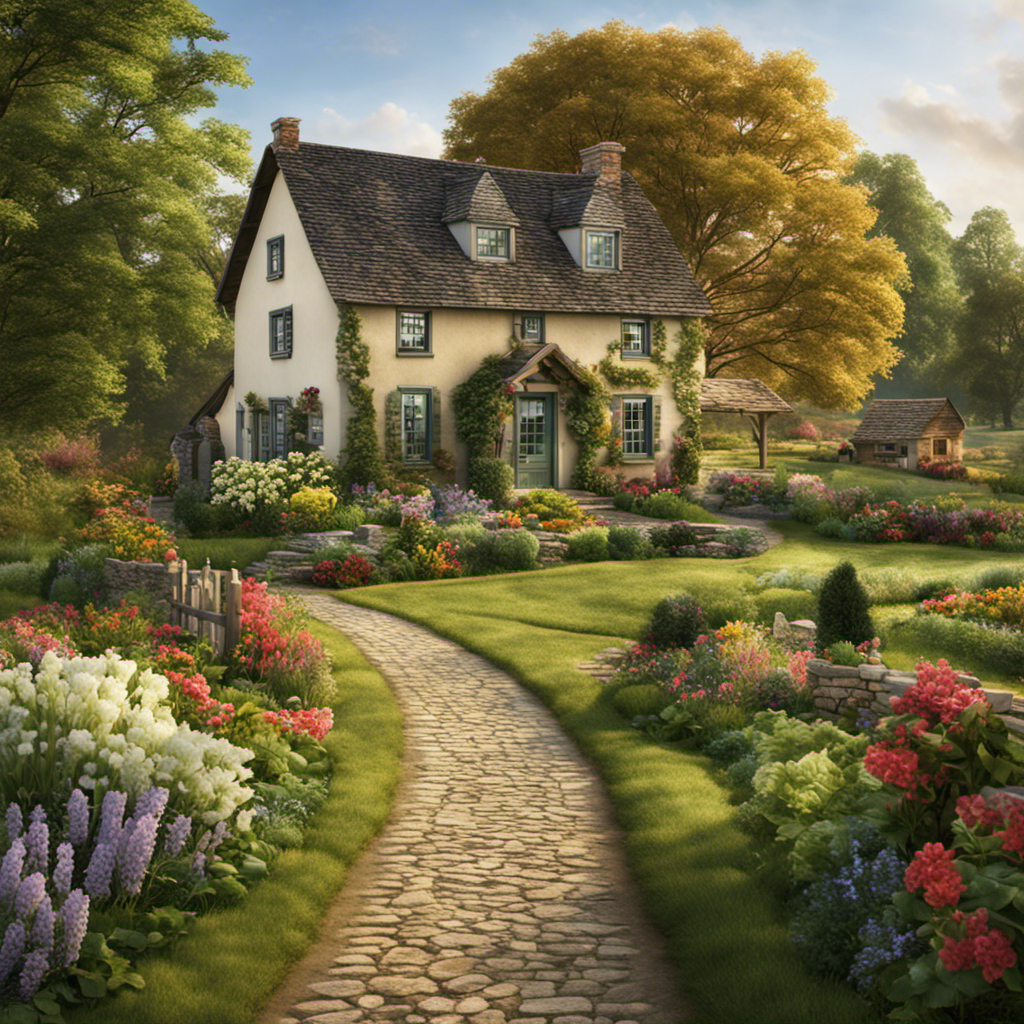Barn architecture ranges from traditional bank barns, built into hillsides for easy access to both levels, to cribs, which are simpler, enclosed structures for storing grain or livestock. Bank barns reflect regional influences like steep roofs for snow or raised bases for moisture control, while cribs focus on practicality and adaptability. Understanding these styles reveals how geography and needs shape barn design; exploring further uncovers the rich history behind each structure.
Key Takeaways
- Bank barns are terraced structures built into hillsides for easy access to multiple levels.
- Cribs are simple, open-fronted storage structures used for hay, grain, or livestock.
- Barn architecture varies regionally, reflecting climate adaptations like steep roofs or raised foundations.
- Preservation of historic barns emphasizes maintaining original design with sustainable and locally sourced materials.
- Modern adaptations often blend traditional features with eco-friendly solutions for durability and cultural integrity.

Barn architecture reflects both practicality and regional tradition, shaping the way these structures serve their agricultural purpose. When you look at a barn, you’re seeing more than just a storage space—you’re observing a reflection of local history and building techniques that have stood the test of time. Many historic barns are considered valuable cultural assets, and efforts to preserve them focus on both maintaining their original charm and adapting them for modern use. If you’re interested in historic preservation, you’ll appreciate how restoring old barns involves careful attention to their original design while using sustainable materials. These materials not only honor tradition but also promote environmental responsibility, *making sure* that restoration efforts are both respectful of the past and forward-thinking.
Sustainable materials play a *vital* role in maintaining the integrity of historic barns. When repairing or restoring these structures, you might choose reclaimed wood, which reduces demand for new timber and preserves the aged character of the original materials. Using locally sourced stone or brick can also enhance structural stability and reduce transportation emissions. The goal is to retain the barn’s authentic appearance and structural integrity, honoring the craftsmanship of previous generations. You’ll find that many preservationists prioritize using eco-friendly options that match the original construction methods, blending sustainability with respect for historic architecture. This approach not only helps conserve the barn’s historical value but also *guarantees* it remains resilient for future generations. Additionally, incorporating renewable energy solutions like solar panels can help reduce the environmental impact of restoration projects.
Understanding the regional influences on barn design can deepen your appreciation for their architecture. For example, barns in colder climates often feature steeply pitched roofs to shed snow, while those in wetter regions might incorporate raised foundations to prevent moisture damage. These adaptations are practical but also serve as regional traditions that tell a story about the landscape and climate. When working on a barn, you might consider how these regional characteristics can inform restoration or renovation projects, helping to preserve the barn’s authenticity. Incorporating sustainable materials into these regional designs reinforces the connection between environment and architecture, making each barn a unique reflection of its locale.
Ultimately, barn architecture is a blend of ingenuity, tradition, and environmental consciousness. Whether you’re involved in historic preservation or simply admire these structures, recognizing the importance of sustainable materials and regional design influences can deepen your appreciation. You become a steward of these rural landmarks, *making sure* they continue to serve their purpose while respecting the craftsmanship and regional identity embedded in their walls. This balance between practicality and tradition keeps barn architecture alive, vibrant, and relevant for generations to come.
Frequently Asked Questions
What Are the Origins of Bank Barn Design?
You’ll find that the bank barn origins trace back to European influences where farmers used natural terrain for efficient construction. This design employs historical construction methods, like building into a hillside, to create easy access to multiple levels. By doing so, you can store crops on the upper level and house animals below, maximizing space and convenience. The design’s practicality and adaptation to terrain make it a lasting solution in barn architecture.
How Have Barn Designs Evolved Over the Centuries?
Over the centuries, barn designs have evolved from simple structures to complex, multifunctional buildings reflecting barn symbolism. You’ll see innovations like bank barns and cribs, which maximize space and efficiency. Preservation techniques help maintain these historic designs, blending tradition with modern needs. As you explore barn architecture, notice how these changes highlight evolving agricultural practices while respecting the cultural significance behind these structures.
Are There Regional Variations in Barn Architecture?
You’ll notice regional styles create charming architectural diversity in barns, reflecting local materials and climate needs. From the sturdy, gambrel-roofed barns of the Northeast to the elongated, open-aisle structures in the Midwest, each design whispers its unique story. These variations showcase how geography influences construction, giving each barn a distinct character that honors local traditions and resources, making barn architecture a fascinating tapestry across different regions.
What Materials Are Commonly Used in Historic Barn Construction?
You’ll find that historic barns are commonly built with timber framing and stone construction. Timber framing provides strength and flexibility, making it ideal for supporting large open spaces. Stone construction, often used in foundations or walls, offers durability and weather resistance. These materials reflect regional availability and building traditions, ensuring the barn’s longevity and functionality. Combining timber and stone showcases the craftsmanship and resourcefulness of past builders.
How Do Barn Designs Reflect Agricultural Practices?
You see how barn designs mirror agricultural practices, emphasizing efficiency, protection, and adaptability. These structures, from bank barns to cribs, showcase sustainable design principles, integrating natural light, ventilation, and space optimization. Modern adaptations blend tradition with innovation, reflecting evolving farming needs. By understanding these designs, you connect with the historic ingenuity that supports today’s sustainable agriculture, fostering a deeper appreciation for how architecture and farming practices grow together in harmony.
Conclusion
You’ve explored the fascinating evolution of barn architecture, from traditional bank barns to modern cribs. Did you know that bank barns, built into hillsides, maximize space and stability, are still popular in 70% of rural areas? This shows how historical designs influence today’s farming practices. As you appreciate these structures, remember how their clever designs helped farmers work more efficiently—proof that functional architecture can stand the test of time.









